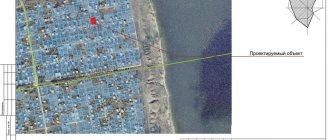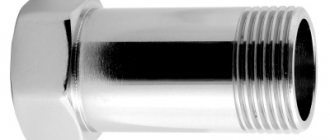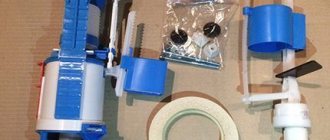The entire operation of the smart home system is based on a whole complex of sensors that monitor various parameters of the surrounding space. Conventionally, the entire variety of these smart devices can be divided into two large groups:
- Motion/presence detectors
- Parameter reading sensors
Despite the wide variety of design options, they all operate on the same principle - they transmit data to the basic control module using Wi-Fi, GSM communication, or a radio signal. And he, in turn, analyzes the situation and gives orders to the devices for this or that action. In this article, we will consider the seven most important sensors for a smart home, their purpose and principle of operation.
What devices are needed to set up a “smart home”
To independently equip an independent life support system in a residential building, you need to purchase the following devices:
- controller – central control module;
- various sensors - transmit information to the central console;
- actuators (for example, taps that will shut off the gas supply in the event of a leak);
- a special application (needs to be installed on a mobile phone or tablet) to control a smart home.
Installation of the system begins with the placement of detectors, replacement of ordinary switches and sockets with devices from the kit. Then all installed elements are programmed and connected to the base controller.
The most important part in the “smart home” set is the controller, which is installed near the front door, has a lot of buttons and a screen: it displays all the data Source delo-elektrika.ru
Settings
Before installation, the sensors are adjusted using regulators located on the housing. This is how trigger thresholds are set: sensitivity levels, illumination levels, delay time and special operating modes.
The viewing angle of the sensor is adjusted in the same way. This is done using plastic overhead curtains included in the kit - they are called signal cut-off filters. The viewing angle is adjusted by breaking off part of the plastic curtain along the notches.
Gas leak sensors
Even the slightest leak of gas is extremely dangerous for any building: it threatens both its integrity and the lives of the owners themselves. Smart home sensors with a sensitive gas analyzer will help prevent such a disaster. Their design necessarily includes a methane detection detector. It triggers instantly if the gas concentration inside the room is only a few percent of the explosive limit.
If triggered, such a device sends a signal to the control panel or the user’s smartphone. At the same time, a sound alert is activated. Some modern models are capable of independently closing the valve in the gas main, thereby stopping gas leakage. This happens if an electronic valve is pre-installed in the gas pipeline, which can be controlled using the detector relay.
The Rubetek gas leak sensor is connected to the overall smart home system, and the data it receives is available to users in the mobile application Source tion.ru
Programmable controllers
The technical controller controls the processes. A programmable module means a logical unit whose functional program is specified by the user. Industrial models differ from home ones in their efficient operation and reliability.
Programmable relays are used with fewer intended tasks, they cost less and are easier to configure. The advantages of using programmable assistants in the home with intelligence are that they organize the interaction of several subsystems, despite the complexity of setup. A modern smart home operates efficiently from central control.
Programmable controllers operate only from a wired bus, because... A sudden shutdown of the device will lead to unexpected consequences.
Motion Sensor
Through a centralized control module, such a device is connected to a video surveillance system. It activates the latter immediately after any moving object appears in the field of view. At the same time, it is possible to turn on the alarm and transmit an alarm signal to a remote host gadget.
Ultra-sensitive occupancy sensors in smart homes are also used to save electrical energy. If they detect any movement of an object in any room, then the lighting there is instantly turned on. Typically, such devices are equipped with ultra-sensitive infrared sensors that respond to the movement of people, as well as their thermal radiation. This principle of operation of the devices does not allow the detector to trigger erroneously (for example, from moving objects under the influence of a draft). Additionally, you can configure the trigger limit, which depends on the size of the moving object. Then the sensor will respond to a person, but will ignore the appearance of a small dog or cat.
When moving objects appear in the sensor's coverage area, the lighting automatically turns on; if there is no movement, it turns off after a certain time Source castorama.ru
Fire alarm
The basis of fire alarms of any type are sensors that respond to the appearance of smoke in the room, or to a sharp increase in temperature. They can be equipped with different types of detectors:
- Temperature relay.
- Photocell that reacts to smoke.
- A gas analyzer that detects the presence of carbon monoxide in the room.
There are also devices on sale that operate in a combined mode: they have several types of detectors built into them, duplicating each other. The sensors communicate via wires or wirelessly with the central unit that controls the fire safety system. If a fire is detected, it can turn off the power to the house, activate the fire extinguishing system, transmit an alarm signal to the emergency services console, and notify the owner of the house.
Here are some fire detectors available on the market:
- Rubetek, capable of covering an area of up to 20 sq.m.
- Xiaomi Mijia Honeywell is capable of transmitting an alarm signal to users' smartphones and to the fire department control panel.
- Rostelecom PSG01. The sensor is made in Russia and operates using photocells. Able to communicate with the central hub at a distance of 30-100m.
Leak sensor
Able to detect flooding of any room and turn off the water supply in time. It is especially important to use if residents are away from the house for days on end. After all, a sudden water pipe break or damage to a faucet can entail significant financial costs for home repairs.
Water leak detectors are usually installed on flooring in areas where there is a high risk of flooding. Often, such devices are battery-powered, so they do not interfere with residents’ ability to move around the room. When the liquid that gets inside the sensor closes the contacts, the mechanism itself transmits a signal to the centralized control panel, and at the same time the sounder turns on.
In order to increase the efficiency of such devices, electronic shut-off valves are installed on water pipes. In this case, the flow of water is interrupted automatically immediately after the device is triggered.
HIPER leakage sensors react to the accumulation of water on the floor in the bathroom or kitchen; it can be installed either as part of a smart home or separately Source hiper-power.com
What kind of box is WB-MSW-ZIGBEE v.3
Since 2012, the domestic company Wiren Board The arsenal includes controllers for home or office on Linux, various expansion modules, relays for controlling electronics, electrical meters, sensors, etc.
Most devices are designed for installation in distribution boards with DIN rail mounting, and controllers and sensors require a wired connection. Such automation tools are most appropriate at the renovation stage with the possibility of laying cables to any point in the house or apartment.
One of the most interesting and multifunctional Wiren Board devices is the combined sensor WB-MSW v.3 (I would still work on the name). Own development and the real pride of the company. One case was developed for about a year with a large number of samples, ordering molds from China, printing prototypes on a 3D printer and casting into silicone molds.
Every detail is provided for. The thickness of the case rests on the “thickest” element of the CO2 sensor; for ease of installation, a cutout is provided for the cable channel to hide the uneven cut with this connection method; the board is separated by special protection from the mounting holes to avoid accidental contact closure during installation. The lid is held in place by a single latch at the end. You won't be able to accidentally press it with your finger; you need a thin screwdriver.
Inside the compact box measuring 83x83x20 mm there are:
1. Temperature and humidity sensor. In early versions of the device, cheaper Chinese sensors were installed, but their performance varied greatly from batch to batch, and after a couple of years, some devices began to significantly underestimate readings.
As a result, the developers switched to a digital combined T+RH sensor with individual calibration. The chip itself is hidden between different layers of the printed circuit board in order to protect the sensitive element as much as possible from water, dust or a careless installer.
2. Light sensor. This is not a simple photodiode, which most analogues are equipped with, but an advanced sensor with a filter that replicates the sensitivity spectrum of the human eye. The sensor has indicators that are as close as possible to real ones, and not relative lux for different types of lighting.
3. Motion sensor. And here, not the simplest and most banal module is used. The D203S PIR sensor covers a viewing angle of 120 degrees and covers an area up to 10 meters away.
The sensor can not only detect the presence of movement, but also take into account its intensity. This way you can programmatically set the required response thresholds, cutting off, for example, pets or interior items moving from a draft.
4. Noise sensor. A microphone and correction filters are used that are as close as possible to the perception of sounds by the human ear. Here, too, there is both discrete recording of noise and determination of its level for finer software tuning of the required automation.
5. Carbon dioxide sensor. High-precision Winsen MH-Z19B modules are used. An infrared sensor scans the air in the room and measures the decrease in light intensity. It turns out to fairly accurately determine the percentage of CO2 in the room. The result is much more accurate than similar electrochemical sensors.
6. VOC sensor. The Sensirion SGPC3 gas sensor is used for measurement. It reacts to the presence of organic gases and vapors in the air, determining its purity. This way you can find out in advance about deteriorating air quality at home or in an office space.
Almost all sensors are modular and not soldered on a board (hello to the guys from Apple). This allows you to produce different modifications of the device with a different set of sensors on board and, if necessary, even upgrade existing models.
Agree that this is a solid set of sensors for a fairly compact and lightweight box. But the benefits and tricks don’t end there.
Window or door opening sensors
They notify the owners about the entry of strangers into the house. When a door or window opens, the contacts inside the device open. The latter provokes an immediate activation of the device, which immediately (depending on the settings) sends a corresponding notification to the owner, notifies the security company on duty, and starts the siren.
A sensor installed on the door helps keep entry and exit areas under control Source datchikidoma.ru
Light and temperature sensors
It is difficult to imagine the functioning of a “smart home” without a temperature detector. It provides a comfortable microclimate in a residential environment. The optimal temperature regime is maintained using thermal indicators that transmit the collected information to the control module. Based on the current settings, the latter gives an order to turn on the air conditioning and heating devices.
Thanks to its universal design, the device can be mounted in any convenient place Source xiaomi.ua
Light sensors are used to save electrical energy. If, when leaving the house, the residents did not turn off the lights, then this device (under certain conditions) will automatically turn off the lamps. With the arrival of the dark period of the day, the detectors can turn on the lighting in the garden plot. Some smart devices are capable of gradually reducing the current supplied to the light bulbs and adjusting the brightness of the light.
The Xiaomi light sensor is capable of turning lights on and off according to a schedule configured in the mobile application Source Ilounge.ua
Additional functions
In organizing a “smart home”, specific devices are sometimes used that are less in demand among users:
- Face recognition detector. It connects to a video monitoring network, is able to recognize residents, and raise the alarm when an unknown person enters the home.
- Humidity sensor. Used for constant control of watering of flowerpots. If the moisture level in the soil drops below a preset limit, the owner receives a sound signal or SMS message on the smartphone.
- License plate detector. This device reads license plates on cars as accurately as possible. When a specific vehicle approaches, it gives a signal to automatically open the gate.
The choice of sensors for a modern “smart home” largely depends on the needs of residents. Before planning to install this system in your home, it is important to decide on the types of such devices, as well as their optimal quantity.
System components
Control is carried out from one area or remote control of electrical devices, mechanisms, and drives is provided.
Electronic home appliances are connected to the Universal Plug'n'Play network. Life support components are linked in the diagram:
- control and communication;
- ventilation, heating, air conditioning;
- lighting;
- power supply;
- monitoring and security;
- mechanization (raising barriers, opening gates, heating double-glazed windows, steps).
Power supply systems include settings for turning on and off lighting, tracking sensors, remote control of sockets, toggle switches. This includes optimized input modules for backup functions and emergency power supplies.











